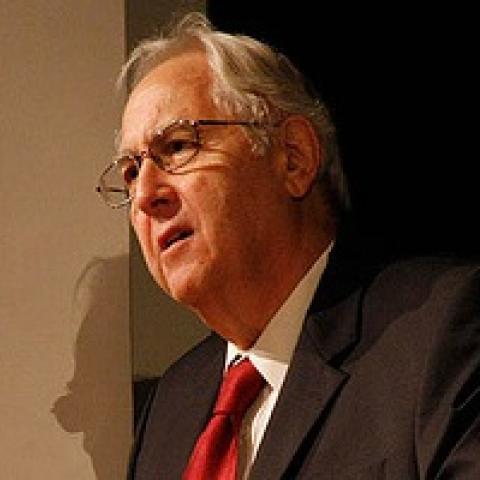Writing in the June 28th issue of The Nation, Philip Weiss and Adam Horowitz present a lengthy article investigating the debate within the American Jewish community over supporting the boycott, divestment, and sanctions movement against Israel (BDS). While most Jewish groups, including liberal ones, recoil from the movement’s effect of delegitimizing Israel, the authors seem to gleam hope for its inroads on college campuses, where there is pressure, especially on Jewish students, to support BDS resolutions.
At Berkeley, where such a resolution was ultimately defeated, Jewish students spoke out against it. Speaking for many of them, one said: “We feel marginalized, we feel scared, we feel intimidated, we feel alienated” by the legislation. But not to worry, claim Weiss and Horowitz, such worries surely “accompany any transformative social movement.” To address their anxieties, Palestinian leader Mustafa Barghouthi told the Berkeley students that they should not “stand in the way like those angry Alabama students 50 years ago blocking integration.”
In their article, Weiss and Horowitz make another specious historical claim about Arab Palestinian boycotts in the past:
Boycotts are not a new tactic for Palestinians. As far back as the 1936–39 revolt against the British Mandate, Palestinians incorporated general strikes and boycotts into their struggle.
Anyone who knows about the 1936-1939 “Arab revolt” knows that its main thrust was against British support of Jewish immigration to Palestine. In his classic book A History of Israel: From the Rise of Zionism to Our Time, Howard Sachar writes that the Grand Mufti of Jerusalem, Haj Amin el-Husseini, demanded that “the British terminate Jewish immigration immediately.” The Mufti’s strong-arm men then saw to it that an Arab general strike was enforced — a step that primarily hurt Arab business and agriculture, and that ironically stimulated the Jewish economy. The cost of the strike, Sachar points out, “to the Arabs themselves became increasingly punitive.”
Local supporters of the Mufti were joined by hundreds of Syrian and Iraqi forces who sought an armed Palestine rebellion, as Axis weapons were smuggled in for them to use. They engaged “in night assaults on Jewish farms, the destruction of cattle and crops,” and “the murder of civilians.” The final result of their long “struggle,” as Weiss and Horowitz call it, was 1300 casualties — 197 Arabs, 80 Jews and 28 British personnel killed. The cost to taxpayers in Palestine was over 6 million pounds.
In his recent book, Palestine Betrayed, the British historian Efraim Karsh writes that rather than seek moderation and compromise, the Mufti put together “a growing number of armed gangs” that “roamed the country, attacking Jewish neighborhoods, British forces, and fellow Arabs who dared defy the anti-Jewish boycott, abstained from striking, or refused to provide the rebels with food and supplies.” When the gangs were next led by Syrian officer Fawzi Qawugji, “the gangs were organized, trained and armed,” and were able to “intensify their acts of murder, plunder and sabotage.”
The Mufti made it clear, as Hamas does today, that he would never even accept the right of the 400,000 Jews in Palestine to remain there safely. His goal, as he told the German consul in Palestine, was that “the Muslims in Palestine and elsewhere were enthusiastic about the new regime in Germany and looked forward to the spread of Fascism throughout the region.” That was the character of the leader of the Arab revolt on which Weiss and Horowitz look favorably.
But they do not have to depend on Sachar or Karsh for accurate reporting on the Arab revolt. They could, should they have wished, turned to The Nation magazine’s own editor and publisher in the years of its greatest influence — the 30s and 40s — Freda Kirchwey. Writing in a March 1948 report called “Arab Claims to Palestine Without Justification,” Kirchwey wrote that the Mufti “in 1936 again was responsible for new attacks upon the Jews of Palestine. At the same time, he caused the assassination of hundreds of prominent Arabs, including 24 leading Palestine Arabs who refused to accept his leadership.”
Moreover, she wrote, “The captured files of the German High Command in Flansburg at the war’s end reveal that the Arab riots of 1936 in Palestine were carried out by the Mufti with funds supplied by the Nazis.” When the Mufti then fled to Syria and later to Iraq, he was “directly responsible for the anti-Jewish pogrom, in which almost four hundred Jewish men, women and children were stabbed or brutally clubbed to death in the streets of Baghdad.”
In essence, in identifying the “Arab revolt” approvingly and as a precedent that informs their work today, Weiss and Horowitz are supporting a Nazi inspired terror which took place against the Jews and other Arab Palestinians who did not support the Mufti’s agenda. It’s not only chilling that American students are being subjected to distortions of American history with fallacious analogies, but also that journalists, who purport to be serious about their craft, would distort the truth about the history of boycotts and general strikes during the “Arab revolt” in Palestine.













